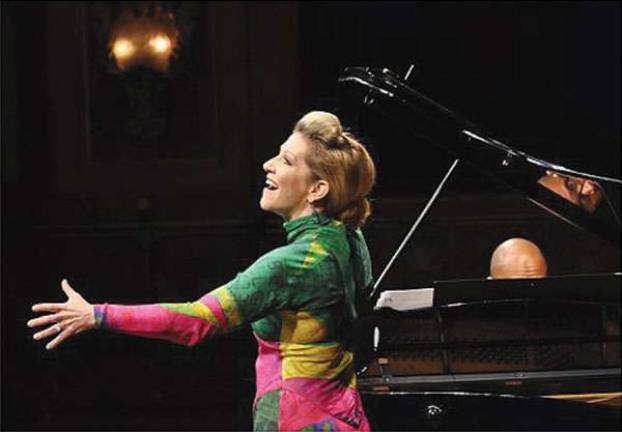A singer, a violinist and a pianist There is so much to crab about, it's nice to rave, once in a while. I know at least three musicians, who have recently performed in New York, who make raving possible. They are a singer, a violinist and a pianist. Singers aren't ranked like tennis players, but if they were, you'd be hard-pressed to keep Joyce DiDonato out of the No. 1 spot. The mezzo-soprano from Kansas sang at Carnegie Hall, accompanied by a "period" band, Il Complesso Barocco. She sang opera arias from the Italian baroque. A few of the arias were by well-known composers such as Monteverdi. Most were by virtual unknowns: Cesti? Orlandini? Porta? DiDonato has done some welcome excavation. When she took the stage, the audience roared for her, as though expecting something good. They got it. She put on a clinic of singing, the way Marilyn Horne used to do, in her prime. Technically, DiDonato can do practically anything. She is almost always in the center of the note. She is utterly secure, meaning that you can be secure as you sit in your seat. Her high notes are free. Her low notes are juicy. She can dig into her lower register, the way a violinist does his strings. Of her musicality, there seems no end. She added a speck of American jazz to a couple of those baroque arias, I swear. Her Italian diction is a model-as when she spat out the first words of a Monteverdi aria, "Disprezzata regina" ("Despised queen"). She has a healthy streak of humor too, which we saw when the band behind her was tuning up. She imitated, almost under her breath, the sound of a string instrument tuning. Memorably funny. Usually, when the band introduced an aria, she looked eager to sing, champing at the bit to sing. We would be too, if we could sing like that. With the New York Philharmonic, Frank Peter Zimmermann played Shostakovich's Violin Concerto No. 1. In the first movement, I thought he was playing too warmly, too beautifully. But I soon realized that the music was still frightening: Shostakovich built the fear into it. In the second movement, the Scherzo, Zimmermann was rude, brash and jabbing. Or rather, the music is that way, and Zimmermann expressed it right. So it was with the Passacaglia, which Zimmermann played nobly. I thought that maybe he and the conductor, Andrey Boreyko, were a touch fast. But they made their tempo work. Incidentally, Zimmermann missed a note or two, which was almost comforting: This was not a studio recording. There's nothing like live. The cadenza, which bridges the Passacaglia and the Burlesque, was superbly calibrated. This was a feat of thinking, as well as playing. And the Burlesque was hot and virtuosic-from the orchestra as well, actually. On this occasion, Zimmermann proved what has been proven many times: Nationality is not destiny. I have always thought of Zimmermann as a markedly German violinist. In the Shostakovich, he was markedly, thoroughly Russian. Pianists aren't ranked like tennis players, but if they were? .?.?.? This brings us to Yefim Bronfman, who performed Beethoven's "Emperor" Concerto in Carnegie Hall, with the Metropolitan Opera Orchestra, conducted by Fabio Luisi. There is a well-known video of Bronfman. He is 17, rehearsing a Bach concerto. Sitting next to him is Gina Bachauer, the famed midcentury pianist. After the concerto is over, Isaac Stern asks Bachauer whether she has anything to say to Bronfman-any advice to give. "Nothing," she says. "Bless him. Nothing else. What can you say?" I have nothing to say about the "Emperor," except maybe this: The opening pages were just a little overpedaled, in my view. Otherwise, Bronfman had Beethoven to a T. The solidity, the limpidity, the rhythm, the chords (deep and precise), the octaves (ditto), the fortissimos, the pianissimos, the trills. The utter evenness of his playing-the sense of weight-is almost spooky. Now and then, someone will ask me, "Whom do you like in the Beethoven piano sonatas? What recordings should I get?" The truth is, I don't have anyone to recommend-although Backhaus and others deserve high praise, certainly for individual sonatas. I know that the recording industry is down the tubes. (Down the YouTubes?) But Bronfman should record the 32 sonatas, even if in his living room, for no money. He owes it to posterity.

